The Core challenges of urban childhood
As cities grow and develop, there is often a lack of safe and child-friendly spaces for children to play, walk or bike alone. The increase in traffic and air pollution makes it challenging and unsafe for children to travel on foot or by bicycle. Crime and social fear also contribute to the restriction of children’s independent mobility, as parents are hesitant to allow their children to roam freely in fear of crime and other dangers. Moreover, unequal access to the city can also affect children’s independent mobility, as some neighborhoods lack the infrastructure and resources necessary for children to explore and play independently. These issues combine to create an environment that restricts children’s independent mobility, leading to adverse effects on their physical and mental health.
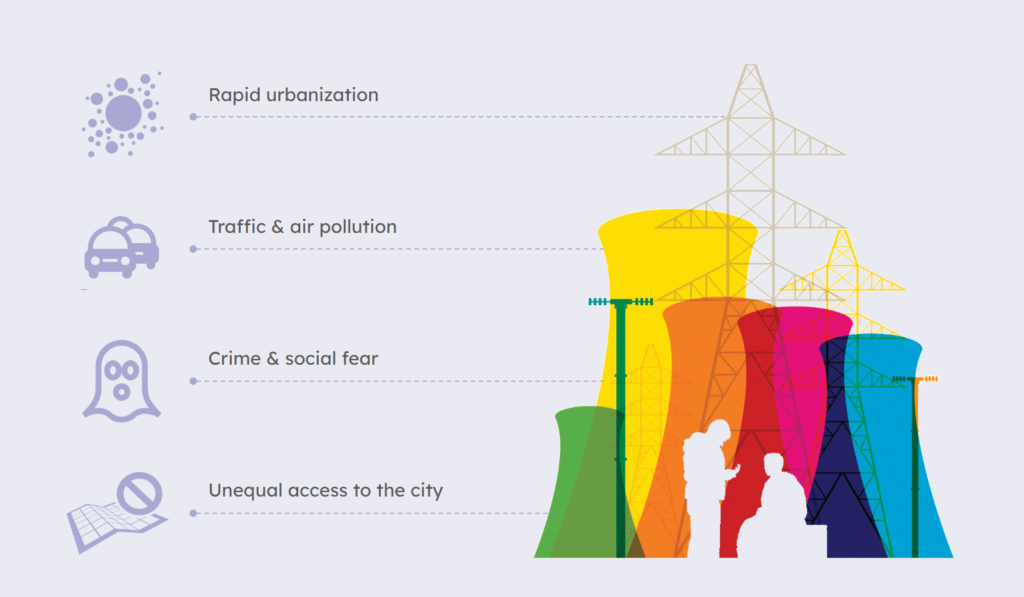
The 2-Dimensions of child-friendly urban planning
According to geographer and urban planner, Marketa Kytta the first dimension of child-friendly urban planning focuses on children’s mobility: their ability to get to spaces and facilities, especially under their own steam (independent mobility). The second dimension is the number and the type of facilities on offer in a neighborhood or a city. Depending on these dimensions the environment can be characterized as Cell, Glasshouse, Wasteland, or Child-friendly city.

Objective
The objective is to cluster the network of streets within the Eixample district based on three criteria: Safety (Transport and Social Safety), Attractiveness, and Comfort. The goal of this exercise is to identify and evaluate the friendliness of the streets in the district by creating clusters based on these criteria.


Data Correlation
The analysis of correlations reveals that crime actions demonstrate a significant correlation with land use diversity and the location of offices. Notably, areas characterized by a diverse range of land uses and the presence of offices are associated with higher rates of criminal actions. In contrast, residential areas exhibit a lower level of visibility than other areas, indicating that they are more vulnerable to criminal actions. This finding highlights the importance of considering land use diversity and the presence of offices when addressing crime prevention strategies. Additionally, it underscores the need for enhancing the visibility of residential areas to improve their safety and security.
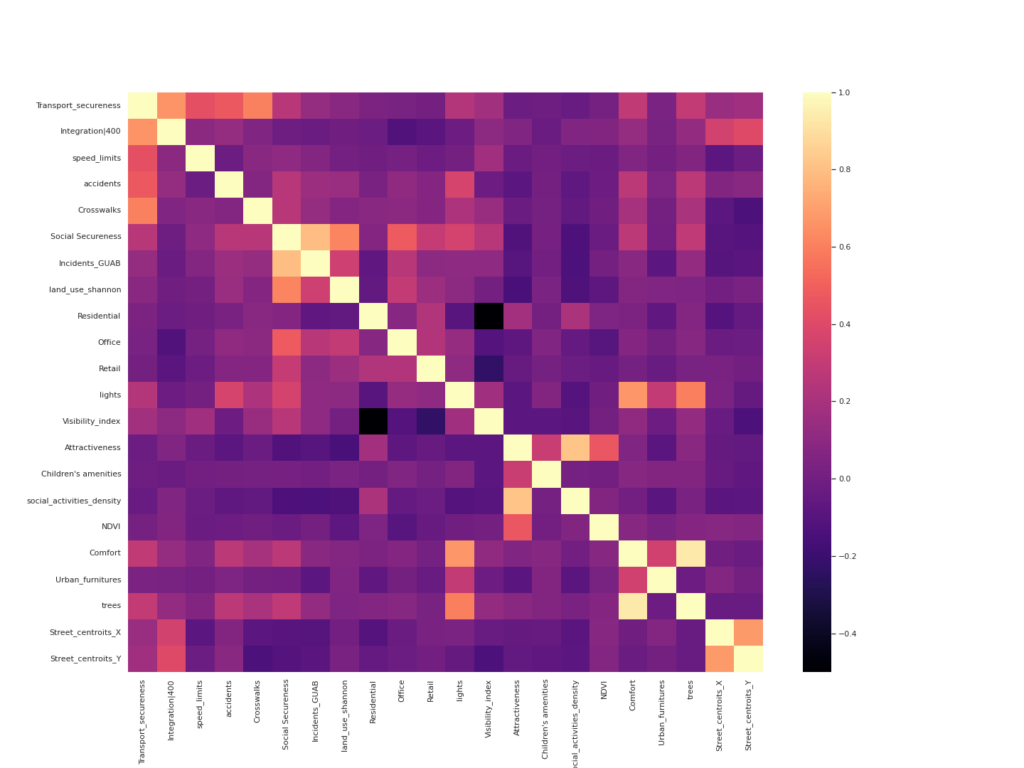
Clustering Experimentation
After experimenting with different numbers of clusters, it was observed that when using 3 clusters and beyond, a recurring pattern emerged where the western and eastern neighborhoods of the district network exhibited similar behavior to the central one. Following the observation of the recurring behavior in the district network, a decision was made to conduct a more extensive analysis of cluster 4, which exhibited a stable pattern. In selecting this cluster for analysis, also the suggestion from the elbow method was taken into consideration.
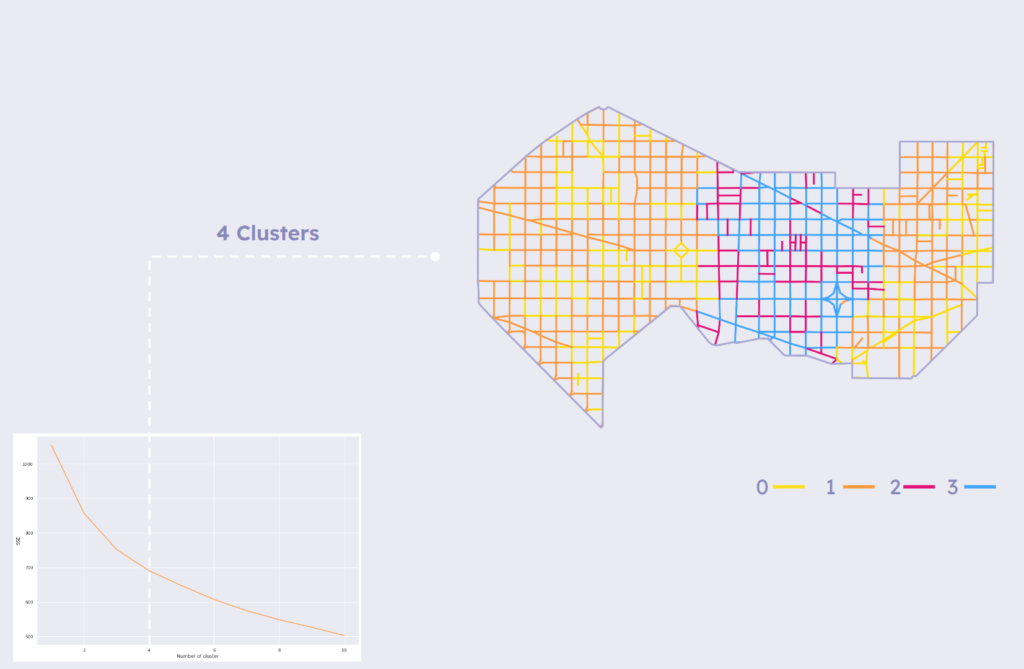
Dimensionality Reduction Results
Based on the execution of Principal Component Analysis (PCA) and t-Distributed Stochastic Neighbor Embedding (t-SNE) with perplexity 50, it was observed that the results obtained from both techniques were similar. The clustering pattern shows that clusters 1 and 2 are tightly grouped and distinct from clusters 3 and 4, which may be explained by Dreta de l’Eixample’s touristy location resulting in higher scores for traffic volume, crime, and land use diversity.
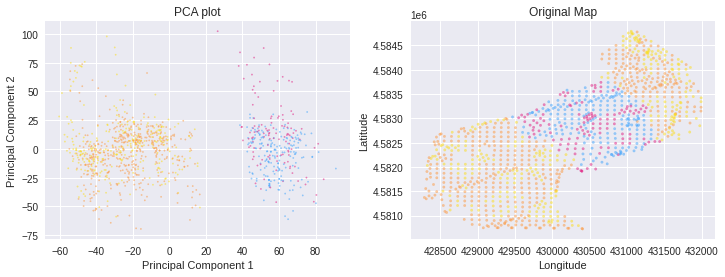

Cluster analysis
After conducting further analysis, it was determined that cluster 0 can be characterized as a friendly network, with higher levels of safety and attractiveness compared to the other clusters. On the other hand, cluster 4 was identified as an unfriendly network due to lower levels of safety and attractiveness. However, all clusters exhibited similar scores in terms of the comfort aspect.
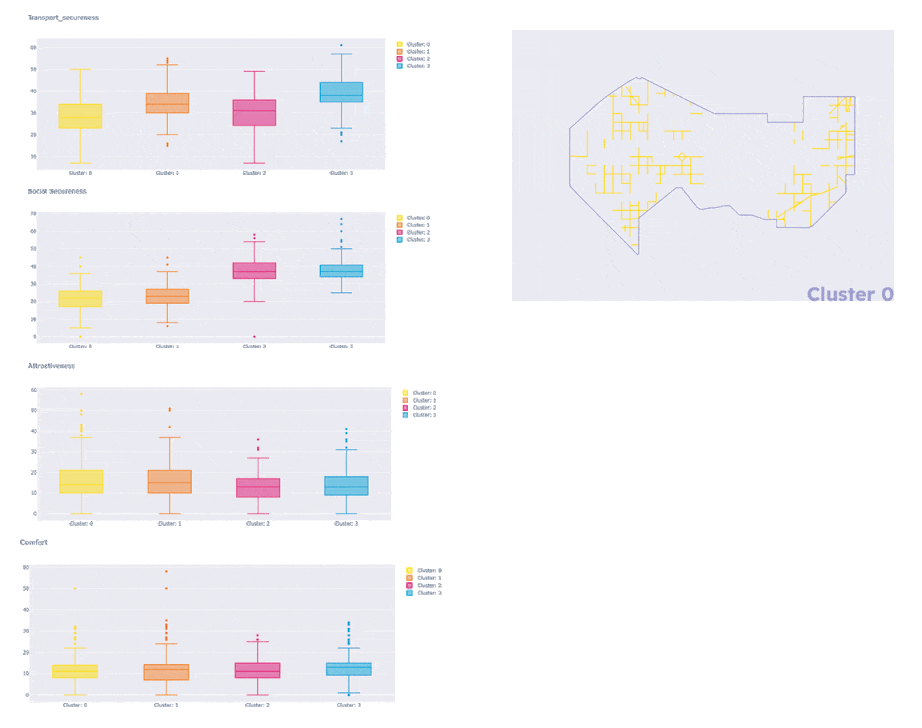

Network Identification
Based on the cluster analysis of the street network within the Eixample district, four categories have been identified: Cell, Glasshouse, Wasteland, and Bullerby. Understanding the characteristics of each category will help to identify specific interventions that can be made to improve the child-friendliness of the network.
The Cell category represents streets that are characterized by low levels of safety, attractiveness, and comfort. Interventions in these areas should aim to improve all three criteria. This could include the creation of new green spaces, the introduction of street furniture, and the implementation of measures to improve road safety.
The Glasshouse category represents streets that are characterized by high levels of attractiveness and comfort but lower levels of safety. Interventions in these areas could include the installation of additional street lighting, the introduction of traffic calming measures, or the creation of designated pedestrian zones.
The Wasteland category represents streets that are characterized by high levels of safety and comfort but lower levels of attractiveness. Interventions in these areas could include the introduction of street art or other forms of public art, the creation of new social spaces, or the introduction of measures to improve the aesthetics of the area.
The Bullerby category represents streets that are characterized by high levels of safety, attractiveness, and comfort. These streets are already child-friendly and may require minimal intervention to maintain their status. However, improvements could still be made, such as the addition of more street furniture, the introduction of greenery, or the creation of additional play areas.
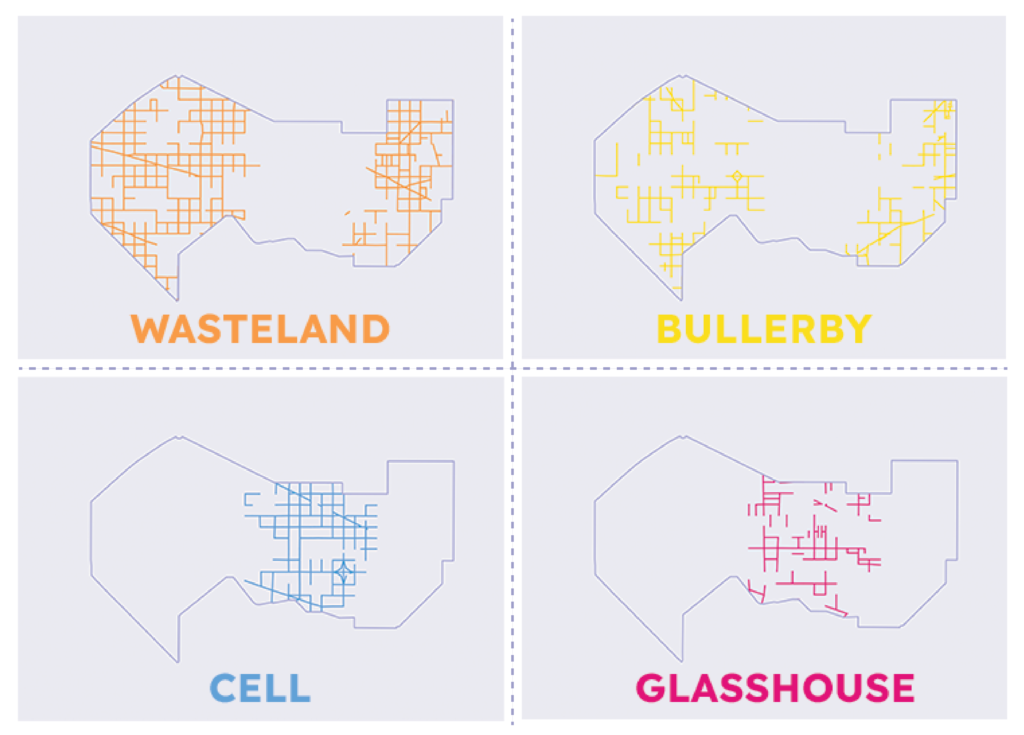
In conclusion, understanding the characteristics of each category of the street within the Eixample district will help to identify specific interventions that can be made to improve the child-friendliness of the network. Through targeted interventions, it is possible to create a more welcoming and enjoyable environment for children, encouraging them to explore and engage with their local community.
* “Bullerby” can be literally translated as meaning a noisy village. The term is used by the famous Swedish writer Astrid Lindgren in a number of her children’s novels where she describes the life of a group of children living in a Swedish village, taking part in the normal everyday activities of the village.

